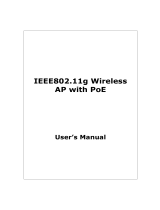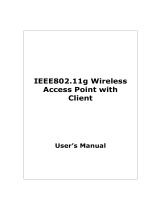
2
5.5 System Log ............................................................................................................................ 24
6 System ..................................................................................................................................... 25
6.1 Operation Mode .................................................................................................................... 25
6.2 IP Settings .............................................................................................................................. 26
6.3 Spanning Tree Settings .......................................................................................................... 26
7 2.4G Wireless and 5G Wireless .................................................................................................. 27
7.1 Access Point Mode ................................................................................................................ 28
7.1.1 Wireless Network .......................................................................................................... 29
7.1.2 SSID Profile .................................................................................................................... 30
7.1.3 Wireless MAC Filter ....................................................................................................... 30
7.1.4 Wireless Advanced Settings ........................................................................................... 32
7.2 Client Bridge .......................................................................................................................... 33
7.2.1 Wireless Network .......................................................................................................... 33
7.2.2 Wireless Advanced Settings ........................................................................................... 34
7.3 WDS ....................................................................................................................................... 36
7.3.1 WDS Station ................................................................................................................... 36
7.3.2 WDS Link Settings .......................................................................................................... 36
8 Wireless Security Settings ......................................................................................................... 38
8.1 WPA-PSK, WPA2-PSK, or WPA-PSK Mixed ............................................................................. 38
8.2 WPA, WPA2, or WPA Mixed .................................................................................................. 39
8.3 WEP ....................................................................................................................................... 40
9 Management ............................................................................................................................ 42
9.1 Administration ...................................................................................................................... 42
9.2 Management VLAN ............................................................................................................... 43
9.3 Wireless Traffic Shaping ........................................................................................................ 44
9.4 SNMP Settings ....................................................................................................................... 44
9.5 Backup / Restore Settings ..................................................................................................... 45
9.6 Auto Reboot Settings............................................................................................................. 45
9.7 Firmware Upgrade ................................................................................................................. 46
9.8 Time Settings ......................................................................................................................... 47
9.9 Log ......................................................................................................................................... 48
9.10 Diagnostics ............................................................................................................................ 48





















